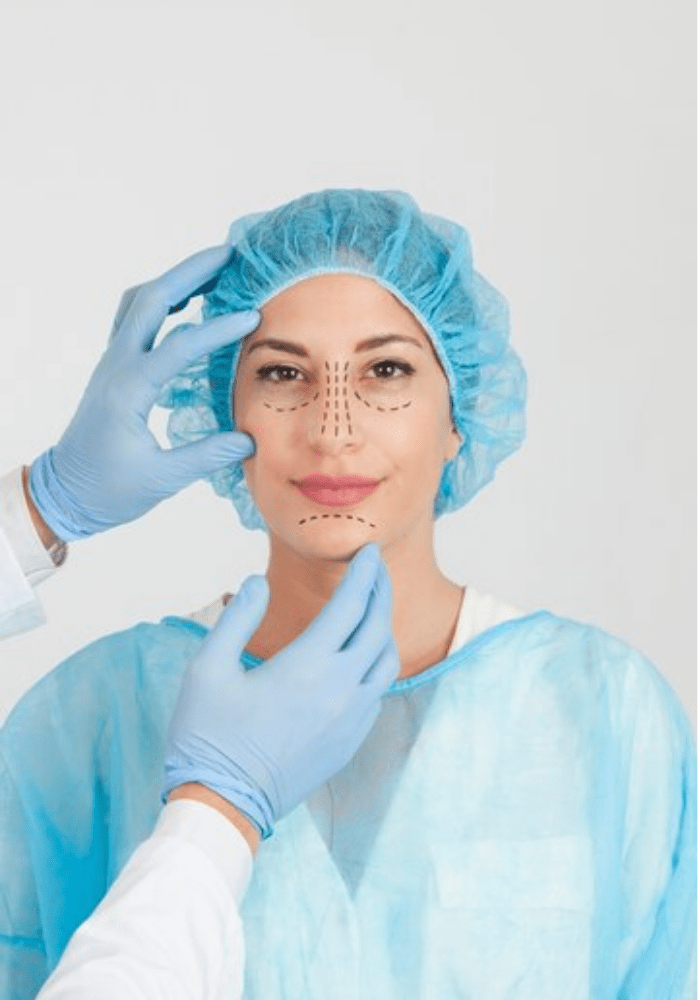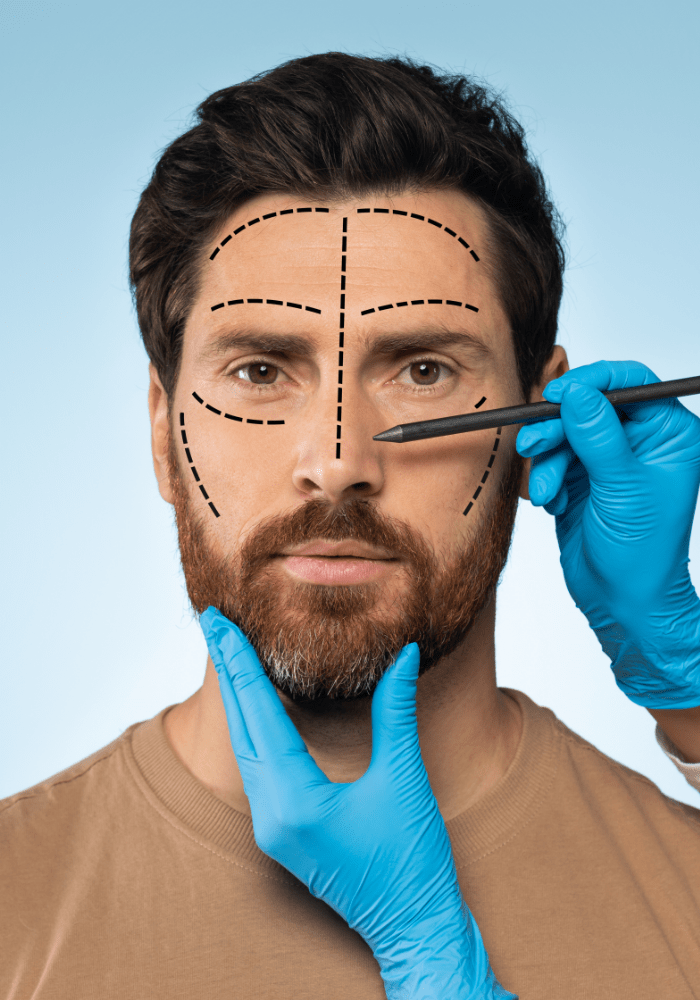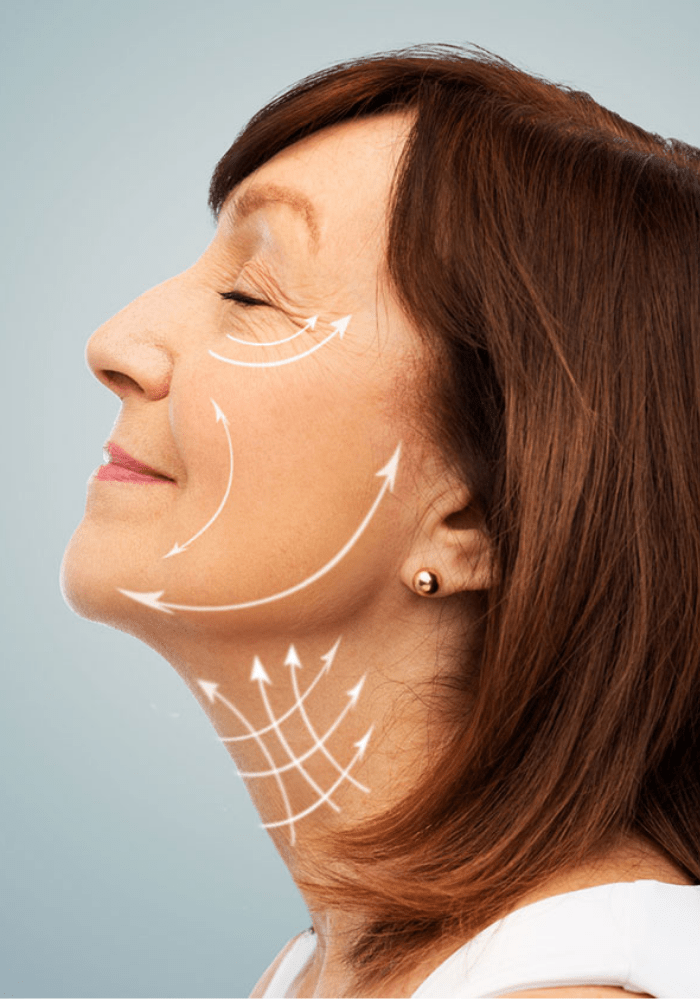Facelift Surgery (Rhytidectomy)

About Facelift Surgery (Rhytidectomy)
In time, gravity, sun exposure, and the stresses of daily life take their toll on our faces and necks. Deep creases appear beside the mouth, the jaw line slackens and jowls appear, and the neck develops loose folds and fat deposits, losing its youthfulness. Even the underlying muscle weakens. As Dr Pritha Rakshit explains, a Top Doctor Facelifts, this surgery can counteract these signs of aging by tightening skin & muscle, removing fat, and trimming excess skin, giving your face a fresher, youthful look. After surgery, some patients look 10-15 years younger.

What is a Facelift?
A facelift, technically known as a rhytidectomy (literally, “removal of wrinkles”), rejuvenates the mid- to lower face as well as the neck. Facelift surgery is most effective for patients who want to correct:
Midface sagging
Deep wrinkles around the cheeks
Deep creases from the nose and mouth (nasolabial folds)
Jowls due to loss of muscle tone and skin integrity (marionette lines)
Sagging areas of the cheek (jowls) with loss of jaw line definition
Loose skin and fat under the chin, in the upper neck, and along the jaw line
Facelift surgery can produce a dramatic improvement in appearance for patients with the problems mentioned above. However, facelifts do not stop the aging process; in time, signs of aging will gradually appear once again. Interestingly though, although the aging process continues, it continues at a slower pace; the favorable scar that develops under the skin from the surgery acts as a replacement for the lost skin-muscle connection. Neck Lifts (neck lifts) are a subset of the facelift, focused more on rejuvenating the neck as well as the lower face (jaw line).
Furthermore, facelift surgery will not rejuvenate the lips, eyebrow, forehead, eyelids, nose, and the temple area. Patients who want to improve these areas, too, may consider combining a facelift with eyelid surgery (blepharoplasty), forehead lift, rhinoplasty, lip fillers, cheek fillers, or Botox®. Inject able soft-tissue fillers like Juvederm®, Radiesse, and other medical skincare products/services can help prepare a patient’s skin for a facelift, and also help to maintain the results after surgery.

Candidates for Facelift Surgery
The best candidates for rhytidectomy: Wish to improve one or more of the signs of aging indicated above Are men or women whose faces have begun to sag, but whose skin still has some elasticity Are generally healthy Do not smoke Have realistic expectations Are considering facelift surgery for personal reasons, not because someone else is pressuring them to do so During your consultation, Dr Pritha Rakshit will discuss whether facelift surgery is right for you.
Facelift Surgery – Techniques
Facelifts are an outpatient procedure with an overnight stay, performed in an outpatient surgical facility. Facelift surgery is almost always performed under general anesthesia and typically takes 4 hours, although if combined with other facial surgeries, such as an eyelid lift, can take longer. The way facelift surgery is performed varies depending on the surgeon, the patient’s facial structure, and the extent of correction desired. The three most common incision techniques are: Stitches are removed in one week after breast augmentation. Any post-operative pain, swelling and sensitivity will diminish over the first few months. Scars from breast augmentation incisions will begin to fade in a few months and will continue to fade over one year.
Traditional Facelift Surgery
The “full” facelift for rejuvenating the face, jowls and neck, including fat sculpting, lifting and repositioning of muscle and deeper tissues, and skin trimming and re-draping. The incision begins at the temples and travels down in front of the ear, coursing around the earlobe, and then continuing up behind the ear to the lower scalp at the hairline, where the incision then courses along the posterior scalp hairline or slightly above the hairline. Sometimes, another incision is made under the chin.

